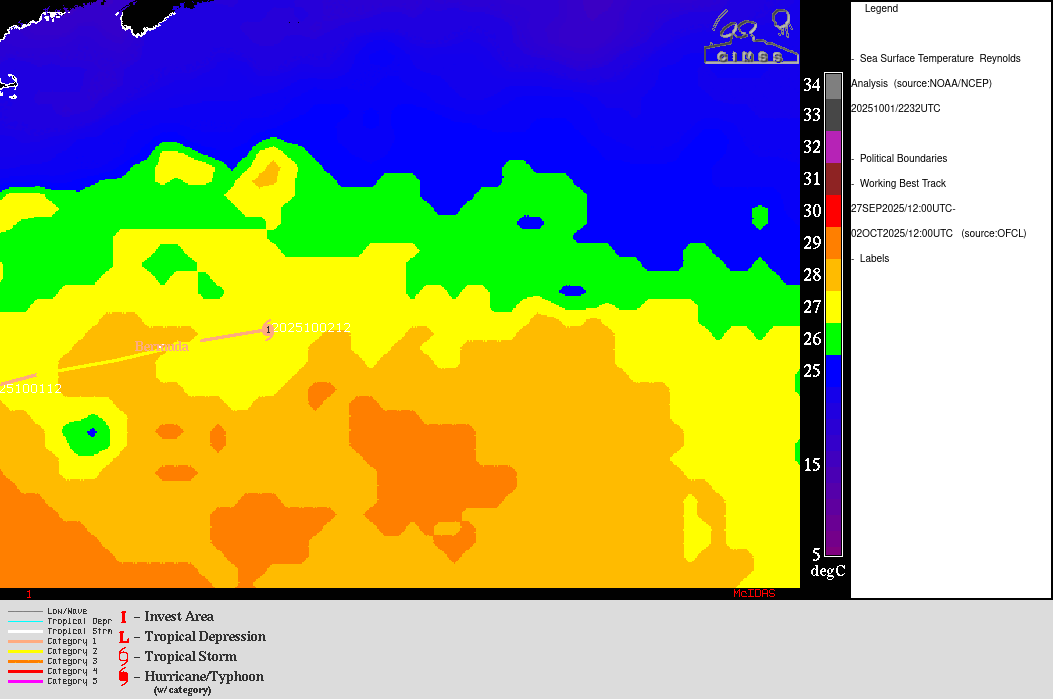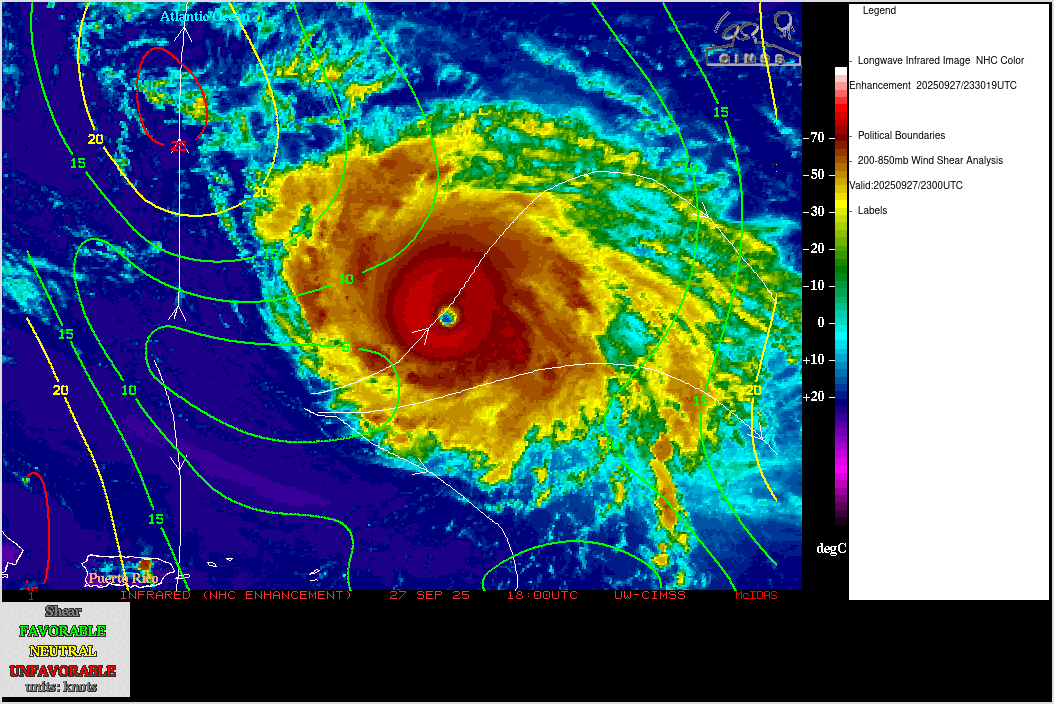
1-minute GOES-18 Infrared images with an overlay of the Total Precipitable Water derived product (in cloud-free areas) and GLM Flash Points (white), along with plots of METAR surface reports (cyan), from 0401-1400 UTC on 09 October [click to play MP4 animation]
A Flash Flood Warning was issued at 0335 UTC (25 minutes prior to the start of the animation shown above), which was valid until 0700 UTC — 0.60″ of rainfall was recorded during the 6-hour period ending at 0600 UTC, but there no reports of flooding on Tutuila that were received by WSO Pago Pago.
GOES-18 Total Precipitable Water derived product values in the vicinity of American Samoa were generally in the 2.0-2.4 inch range — and a toggle between Pago Pago rawinsonde data at 0000 UTC and 1200 UTC (below) indicated that Precipitable Water (PW) increased from 2.19 inches to 2.40 inches during that 12-hour period. In addition, after 1200 UTC the coldest cloud-top infrared brightness temperatures associated with some of the rain showers and thunderstorms across the region were around -80ºC (darker shades of purple embedded within brighter white areas) — which represented a small overshoot of the Most Unstable (MU) air parcel’s Equilibrium Level (EL).

Plots of rawinsonde data from Pago Pago (NSTU) at 0000 UTC and 1200 UTC on 09 October [click to enlarge]
View only this post Read Less



















